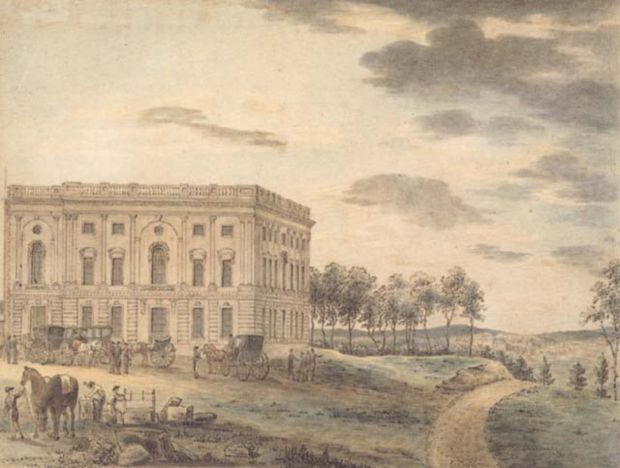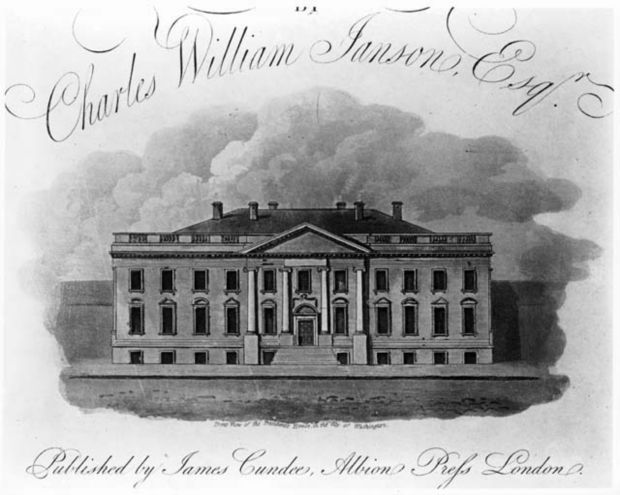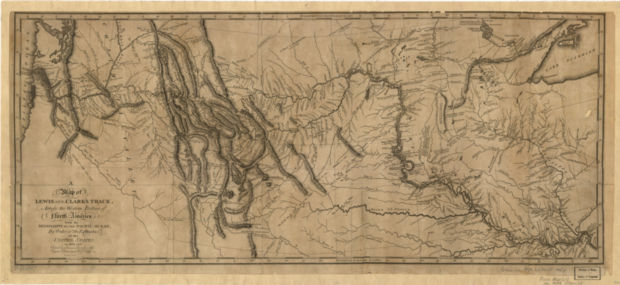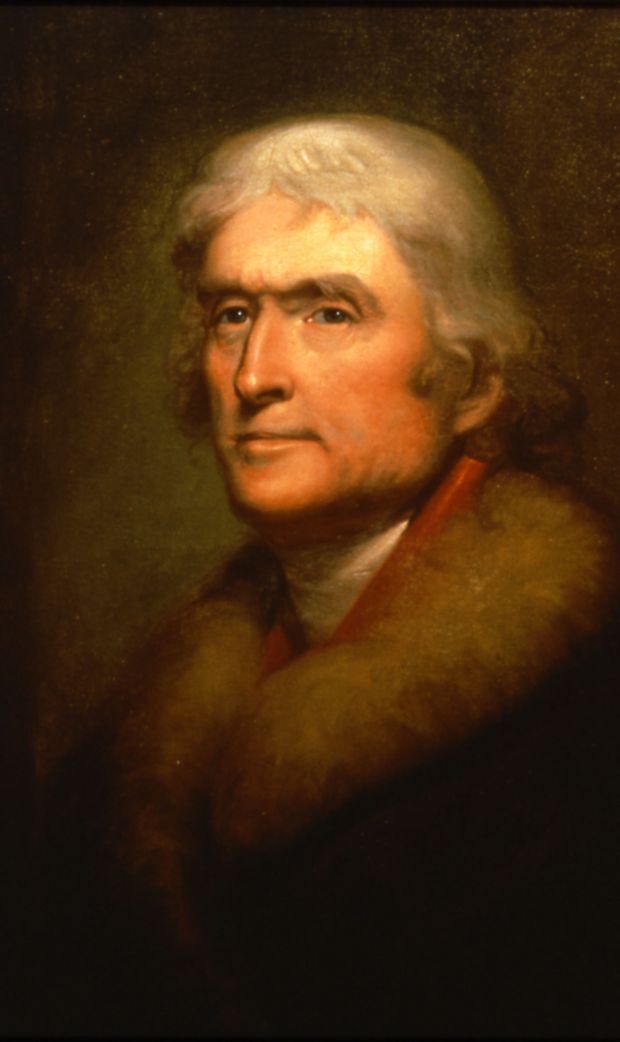Thomas Jefferson: President of the United States
Reading Level: Middle School

Alexander Hamilton was one of the leaders of the Federalist Party and one Jefferson’s chief political rivals.
“Kingly over Republican Government”
It was a bitter presidential campaign. Thomas Jefferson was praised as the “steadfast friend to the Rights of the People.” John Adams was called a “royalist” who wanted a government ruled by well-born, wealthy men. It was 1796, and Jefferson lost the election by three votes. At this time, there were not separate elections for president and vice-president. Since Adams received the most votes, he became president. Since Jefferson received the second highest number of votes, he became vice-president.
The election highlighted the differences between the two opposing groups. The Federalists felt that voters did not have the education to make decisions on government matters. They favored a strong federal government. Federalists included George Washington, Alexander Hamilton and John Adams. Republicans such as Thomas Jefferson and James Madison disagreed. They felt that people had good judgment. They wanted a strong state and local government. They supported the republican ideal of a government belonging to the people.
Today Americans are used to political parties. Republicans and Democrats fight for elections, share power and try to run the government together. In 1796, the Republicans and Federalists were not considered political parties. They were two groups made up of white males with different ideas who wanted power within the new government.
During Jefferson’s term as vice-president, the differences between the Federalists and the Republicans increased. Republican newspaper editors were jailed or fined. Jefferson worried that his mail was opened. He feared that Federalist ‘spies’ were listening in on his conversations. Jefferson said that the Federalist’s attacks on liberties were “an experiment on the American mind, to see how far it will bear an avowed violation of the constitution.”

This copyprint of a watercolor by William Birch shows the completed north wing of the U.S. Capitol in 1801.
Election of 1800
The election of 1800 again pitted Thomas Jefferson against John Adams. It has been called one of the most “vicious elections in American history.”
Jefferson and Aaron Burr ran as Republicans. John Adams and Charles Cotesworth Pinkney ran as Federalists. Federalists claimed that “a vote for Jefferson was a vote against God.” The Republicans claimed that Adams and the Federalists wanted to “set up a monarchy and enslave ordinary people.” The Federalists were supported by New England and much of the north. The Republicans were supported by Virginia and much of the south. Many feared that the intense differences could lead to a civil war.
Jefferson defeated John Adams by four votes. Jefferson and Aaron Burr, however, had tied for the presidency with 73 electoral votes each. The House of Representatives, dominated by Federalists, had to break the tie.
In February 1801, representatives from the House gathered to vote. In the streets of Washington, DC, over a hundred people waited as the voting dragged on. Finally, Alexander Hamilton, a leader of the Federalists, helped influence the opinion toward Jefferson. He felt Jefferson was the safer man between the two. James Bayard, the representative from Delaware (and a Federalist) broke the tie. Thomas Jefferson was elected the fourth president of the United States.
Because of the difficulties with the election, Congress passed the Twelfth amendment three years later. It stated that there would be separate voting for president and vice-president.

Prior to the War of 1812, the White House was known as the President’s House, here depicted in an engraving from the book Stranger in America by Charles Jansen.
“We are all Republicans: we are all federalists.
Jefferson called the election of 1800 the “bloodless revolution.” Civil war had been avoided. There had been a peaceful transfer of power from one group (the Federalists) to another (the Republicans). Jefferson believed the Republican triumph united the people in the “strongest Government on earth.” Others thought the split between the Federalists and the Republicans would cause problems. It was up to Jefferson, the incoming president, to set the stage for a new era of harmony and good will.
March 4th was the day of Jefferson’s inauguration. True to his republican beliefs, he walked from his boarding house to the Capitol instead of riding in a fancy carriage. He wore plain clothes instead of elegant ones. He proclaimed “Let us, then, fellow citizens, unite with one heart and one mind. . . . We are all republicans: we are all federalists.” All over the nation, bells rang and guns fired. The cheers showed American’s faith in the president they had chosen.

This map shows the boundaries of the Louisiana Purchase as recognized today. In 1802, the U.S. and its territories occupied most of the land to east.
Louisiana Purchase
During Jefferson’s first term as president, he guided the purchase of the Louisiana Territory. Since the American Revolution, pioneers had crossed the Appalachian Mountains, settling in the “west.” Spain had given the settlers permission to use the Mississippi River and the port of New Orleans to ship their goods to market. However, Spain was a weakening power. France, ruled by Napoleon Bonaparte, was determined to become the greatest power in Europe. Jefferson feared that Spain would give France authority over the Louisiana Territory. Jefferson wrote to U.S. Minister to France Robert Livingston, “Every eye in the U.S. is fixed on this affair of Louisiana.”
Jefferson dreamed of a vast democratic Republic stretching from the Atlantic to the Pacific. He sent James Monroe to join Livingston in France. Their goal was to buy New Orleans and part of Florida. Ten million dollars had been approved by Congress.
Napoleon was getting ready to go to war with England. France needed money for the war. The country did not have the armies to defend the entire Mississippi Valley and fight a war with England. Napoleon offered the entire Louisiana Territory along with New Orleans to Monroe and Livingston.
What exactly were the two men buying? The Louisiana Territory was mysterious and unexplored. No white man had ever been all the way up the Missouri River. Some people believed there was a huge inland sea in the middle of the territory. Others believed it was filled with strange animals. Most hoped there was river passage to the Pacific Ocean.
On April 30th 1803, Monroe and Livingston agreed to pay $15 million to France for the Louisiana Territory. (About three cents per acre). The land stretched north to where the Missouri River began as a tiny stream and west to the Rocky Mountains. Most Americans, Jefferson included, were overjoyed. The Mississippi River and the Port of New Orleans were secured without a war.

This map of the western part of the Lewis and Clark Expedition was drawn by Samuel Lewis (no relation to Meriwether) using drawings supplied by William Clark.
Lewis and Clark
Even before the Louisiana Purchase, Jefferson had planned to explore the vast territory. He prepared his secretary, Meriwether Lewis, for the adventure. Lewis had been a U.S. army captain on the frontier. He had experience dealing with Native Americans.
Jefferson wanted the expedition to accomplish several goals. Lewis was to find a water passage to the Pacific Ocean. He was to establish trade with the Native Americans and impress them with the might of the United States. And he was to search for “the animals of the country generally, and especially those not known in the United States.”
In May 1804, Captain Lewis along with Captain William Clark and a group of more than forty men headed up the Missouri River (they were later joined by their Shoshone guide Sacagawea and her husband Toussaint Charbonneau). They traveled over three thousand miles across dry prairies and snow-covered mountains. They lived off the land, built shelters and shot game. They traded glass beads, tobacco and knives with Indians for food and horses. They named rivers and streams after famous Americans. Finally, they found the Columbia River. From there they made a treacherous water journey to the Pacific Ocean.
The trip took over two years, four months and nine days. Believing the trip would only take a year, Jefferson had assumed all was lost. The group finally returned to St. Louis in September 1806. Jefferson felt “unspeakable joy” in their safe arrival even though Lewis had not accomplished all of his goals. He reported that there was no easy water passage to Pacific. He reported that tribes such as the Shoshone and Nez Perce were not interested in being ruled by “The Great White Father in Washington.” But Lewis and others in the group had kept detailed journals. They had drawn over a dozen maps. They described prairie wolves (coyotes) and barking squirrels (prairie dogs). They sent back samples of the Osage orange and yucca. They wrote of attacks by Blackfeet Indians and grizzly bears. The accounts of the journey to the “wild west” were widely read.
Embargo Acts
Jefferson’s second term of office was not as successful as his first. The four years were darkened by The Embargo Acts. Embargo is an order from the government keeping ships from leaving or entering a port. The Acts were a series of laws passed by Congress. Jefferson supported the Acts, hoping to keep America out of the conflict between France and Great Britain.

Copy of an 1805 portrait of Thomas Jefferson by Rembrandt Peale; copy by James L. Dick.
The war between France and Great Britain had created demand for American goods. The United States was neutral, trading with both sides. Both France and Great Britain tried to stop America’s trade with the other. Both sides attacked US ships suspected of carrying war materials. Also, Great Britain was ‘impressing’ sailors. They seized sailors on American boats and forced them into the British Royal Navy.
The goal of the Embargo Acts was to hurt France and Great Britain by limiting their access to American goods. Congress passed the first act in Dec. 1807. It closed all American ports so goods could not be shipped to other countries (exports). Goods coming in from other countries (imports) were also affected.
The embargo was very unpopular, especially with farmers and merchants who relied on exporting their goods. They felt it violated their rights. Many ignored the laws. They smuggled their goods through Canada instead. In frustration, Jefferson proposed even stricter laws. The last Embargo Act of 1808 gave Jefferson power to use the U.S. Army and Navy to enforce the embargo. In trying to punish France and Great Britain, Jefferson was punishing his own people.
The unpopular acts were repealed at the end of Jefferson’s last term as president. The embargos were lifted, allowing trade with all countries except France and Great Britain. Jefferson’s actions had turned the public against him. The acts also didn’t keep America neutral. In 1812, the United States went to war with Great Britain.
Jefferson did not seek reelection. He felt the new country should have presidents with limited terms, unlike a monarchy which had unlimited reign. (It wasn’t until 1951 that the United States Constitution set limits on the presidency to two terms.) In the end, Jefferson was true to his Republican ideals.

